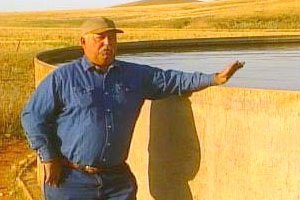The other day I was reading a great little book called The Empire Of The Summer Moon, and came across some very interesting history. For those that have read my history posts, I tend to gravitate towards tipping points in war fighting history, all with the idea of learning what led towards that tipping point. It is important to do this, so we can apply these lessons of warfare to current and future wars. That is my intent and that is what being a student of warfare is all about.
The book itself describes the Comanches as the most feared and capable indian tribe on the frontier in early America. These guys were masters of horse mounted warfare, and they were actually doing quite a good job of holding off the advances of the Spanish, Mexicans and French, as well as the Americans for a long time. Back in the day, the borderlands and the plains were definitely not easy to live in. Between the Comanches and bandits, the advancement of civilization was brought to a standstill. Enter the Texas Ranger, John Coffee Hays.
It is always interesting to boil down the turn around or tipping point of conflict, and Hays and his use of the Colt repeating pistol is that tipping point. This warrior developed the methods necessary to defeat the Comanche and other tribes, and I think it is important to identify what led to this evolution in warfare. Because up until John Hays entered the scene, Indian fighting was unorganized and not very effective. The Comanches were the masters.
So what contributed to John Hays and his way of fighting? His upbringing was interesting and he came from a long line of leaders and war fighters, starting with the Revolutionary War. But ultimately, he developed a passion for fighting the indian tribes while working as a surveyor in Texas. This is when he was first exposed to the indian way of war, and in order to continue living and working as a surveyor back then, you needed to figure out how to survive that kind of warfare. Also, surveyors hired guards to protect them on their little outings. Those guards would later fill the ranks of the citizen army called the Texas Rangers and the ranging companies.
Hays joined the Texas Rangers out of patriotism and a desire to defend Texas, and witnessed first hand what this kind of warfare produced. I am sure burying hundreds of victims of the Goliad Massacre left an impression on him. The Comanches and other tribes did not take prisoners back then, and took it upon themselves to torture captives to death as well. They would burn them alive on wagon wheels, scalp them, cut them up and mutilate them, skin guys alive, etc. Mind you, the Comanche fought other tribes and did unspeakable things to each other, and they applied this same brand of warfare to the advancing white man. The Comanche also took prisoners and made them into slaves, to include white settlers. These were some bad dudes to fight and they did not mess around. These warriors were also incredible horsemen and could wield their bows and arrows on a horse far better than any white men. They were even considered to be pretty awesome amongst the other tribes, if that gives you an idea of the kind of fighters they were. Most importantly, their weapons were more effective than anything Hays and his men had at that time. For every one shot of a single shot pistol, an indian could launch six arrows from a quiver. The indians could also move very fast with horses, and were extremely accurate with said bows and arrows.
The Comanches also had hundreds of years of warfare behind them. They fought other tribes and of course the Spanish and French, and these guys were definitely the Vietcong of the old west. They could survive off the land, track anyone with amazing ability, and they could ride a horse like no other.
So how did John Hays and the Texas Rangers step up to the challenge? They basically copied the Comanche, used indian scouts, were more pragmatic and calculated than the Comanche, had extreme courage, and most importantly–embraced new technologies.
Not only did they copy the Comanche, but they also stole ideas from the Mexican forces and other indians they came across. They would ride on special horses that could keep up with the Comanche horses, they would wear leathers to protect against brush, a sombrero hat to protect against the sun, and they would carry plenty of single shot revolvers, rifles, and knives. The revolver is what is key in this story, because before the multi-shot repeating revolver came onto the scene, the Rangers were extremely limited in capability and the Comanches knew it.
Hays also created a learning organization within his ranger company. He would study the Comanche and figure out strategies of attacking them based on the capabilities of the rangers and past battles with the Comanche. Most importantly, he used indian scouts that had a beef with the Comanche. These guys could track, understand the language, and otherwise be the tool necessary for understanding the Comanche and defeating them. This is a crucial point of warfare in the wild west, and it is a factor of warfare that is important today. Your local national interpreters are the ones that will help you to navigate the human terrain and to understand the enemy.
The Rangers did not use bow and arrows either(except for the indian scouts in the company), just because that is a skill that takes years of development. They instead depended on muzzle loaders. I think about the long bow archers of yesteryear and how specialized they were, and how valuable they were to the various armies that used them. The old west was no different, and I look at the Comanches as long bow archers on horseback. Lethal and highly mobile.
But the Rangers did develop horsemanship skills, and tried to copy the Comanche style. They would hang off a saddle, and shoot their pistols from under the neck of the horse–all while the thing was moving! The Rangers would train at shooting their rifle at one target, then switch to their pistol for another, all while on horseback. (old school transition drills) They also did the same things to the Comanches as the Comanche did to others. One tactic was to stampede the enemy’s horses so they would be without mounts.
This is an important tactic to cover, because out in the high plains, if you did not have a horse you were going to die out there. Horses are what got you to towns or watering holes before you starved or became dehydrated. Taking out your enemy’s horses, was like destroying the fuel and logistics trains of a tank battalion in modern warfare.
Hays also learned about killing the tribal leaders as a strategy. It was bad medicine when a chief was killed, and often times a Comanche war party would break their attack if the chief was killed. So Hays would use a sharp shooter and focus on killing the chiefs. Then he would charge the remaining war party for the ultimate in shock factor. Boyd would have been proud of Hays. It kind of reminds me of today’s way of breaking an ambush or of how a bayonet charge scares the crap out of a defender.
But Hays and his men were always limited in their lethality by the weapons they carried. Things changed big time when Hays and his Rangers got a hold of a repeating pistol from a failing company called Colt. Without Hays and his requirements for a weapon that could better suite his method of warfare, Colt would have arguably never existed. The repeating pistols they originally produced were kind of junky, and no one in the military or US were at all sold on the things. But all it took was some Rangers to use the pistols and give glowing reviews on their effectiveness in battles, and then things turned around for Colt. Colt also listened to their Texan customers, and built a better pistol for them. Nothing sells a concept more than proof of concept and these Texas Rangers proved handily how effective this pistol was in their fight. For a more detailed explanation of this history, please read below.
The first real test of these revolvers, and the proof of concept of using a repeating pistol while mounted on horse happened at the Battle of Walkers Creek. This was the west’s version of the Battle of Margiano back in the 14th century. It was there that the first repeating pistol was used in warfare, and Hays and his men cleaned house so to speak. From that point on, the Rangers were delivering victories time and time again. They copied the Comanche tactics, they used their indian scouts to track and ‘know the enemy’, they were fearless and calculated with their assaults, and they introduced a new technology to give them the strategic edge in battle. Sound familiar? (The German Landsknecht vs. the Swiss Guard)
So from then on, the concept of a repeating revolver and fighting from a horse caught on. Everyone copied this new way of warfare in the west, or at least tried to. Cavalry units, stage coach teams, lawmen, bounty hunters, cowboys, range detectives, prospectors, mountain men, frontiersmen, etc. If you did not have a horse and a repeating weapon, you were at a severe disadvantage against the indian way of war. The horse allowed for speed, the repeating pistol allowed for lethality. And as the pistol and rifles evolved into bigger calibers, better barrels, and cartridges, the lethality increased. That evolution of warfare in the west all started with John Coffee Hays and his Rangers, along with the introduction of the repeating pistol. –Matt
—————————————————————–

John Coffee Hays.
Jack Hays and the Colt Revolver
The Texas six-shooter was first made famous by a Ranger captain named Jack Hays. John Coffee Hays was a Tennessean, from the same county as Andrew Jackson and Sam Houston; in fact, his grandfather had sold Jackson the Hermitage estate. Hays was a born adventurer, of the type called forth by many frontiers. He went west to Texas as a surveyor, was mustered into a ranging company, and suddenly found his métier. Hays was a natural warrior. He was soon recognized as the captain of his band, and, at the age of twenty-three, he commanded the San Antonio station, the most dangerous and important Ranger post in western Texas.Jack Hays was the prototype for a certain kind of emerging American hero. He did not look like a fighting man’s hero: he was slight and slim-hipped, with a clear, rather high voice; he had lovely manners and was seen as a “perfect gentleman” by the belles of San Antonio. Hays was utterly fearless-but always within the cold, hard bounds of practicality, never foolhardy. He was not a talker, and not even a good gunman, but a born leader of partisans who by great good luck had been born in the right time and place. Hays was calm and quiet, almost preternaturally aware of his surroundings and circumstance, utterly in control of himself, and a superb psychologist, in control of all the men around him. His actions appeared incredibly daring to other men who did not have Hay’s capacity for coolly weighing odds. It is known that most of the other Ranger leaders, and hundreds of future riders, consciously tried to “be like Jack Hays”-strong, silent, practical, explosive only in action. He put an indelible stamp on the force that was soon to be formalized as the Texas Rangers. (more…)


